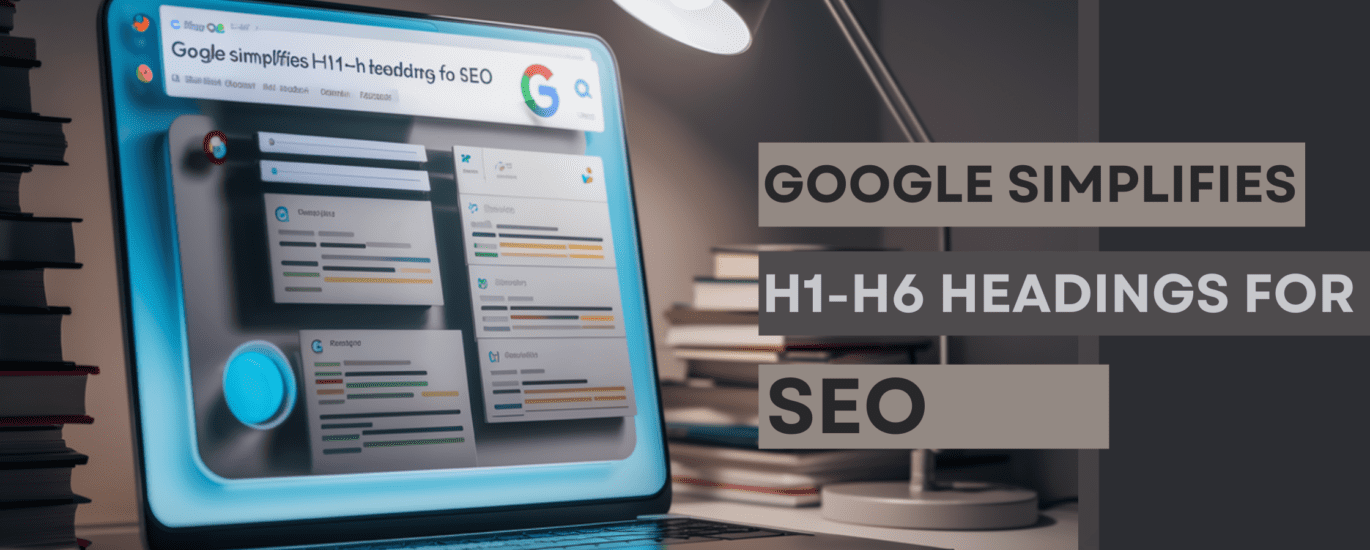The Importance of Headings in SEO
Headings play a crucial role in organizing content, enhancing readability, and improving SEO. They guide both users and search engines through your webpage, providing a clear structure and emphasizing key points. Google’s clarification on the use of H1-H6 headings is a significant update for SEO professionals, content creators, and web developers.
Google’s Clarification on H1-H6 Headings
Google has recently addressed common misconceptions about the use of H1-H6 headings. The search engine giant emphasized that there is no strict limit on the number of headings you can use on a page. This clarification dispels the myth that only one H1 tag should be used per page. Instead, Google encourages the use of multiple headings as long as they help structure the content logically.

Key Points from Google’s Update
- Multiple H1 Tags Are Acceptable: Google stated that using multiple H1 tags on a page does not negatively impact SEO. The primary focus should be on providing a clear and logical structure that enhances user experience.
- Hierarchy and Structure Matter: The correct use of headings should follow a hierarchical structure. H1 is typically used for the main title of the page, while H2, H3, and other subheadings break down the content into manageable sections. This hierarchical approach helps search engines understand the context and importance of each section.
- Semantic HTML5 and Accessibility: Google encourages the use of semantic HTML5 elements to improve accessibility. Properly structured headings can enhance the experience for users with disabilities, as screen readers rely on heading structures to navigate content.
Best Practices for Using Headings in SEO
To optimize your content for SEO and user experience, follow these best practices when using H1-H6 headings:
Use Descriptive and Relevant Headings
Ensure your headings accurately describe the content that follows. This not only helps search engines understand the context but also sets clear expectations for your readers. Avoid generic headings and focus on incorporating relevant keywords naturally.
Maintain a Logical Hierarchy
Follow a logical hierarchy when structuring your headings. Start with an H1 for the main title, followed by H2 for major sections, H3 for subsections, and so on. This approach creates a clear outline of your content, making it easier for both users and search engines to navigate.
Avoid Keyword Stuffing
While it’s important to include keywords in your headings, avoid keyword stuffing. Overusing keywords can lead to a poor user experience and may be penalized by search engines. Aim for a natural and readable flow.
Enhance Readability and Engagement
Well-structured headings can significantly enhance the readability and engagement of your content. Break up long paragraphs with relevant subheadings to keep readers interested and guide them through your article.
The Role of Headings in Modern SEO
In modern SEO, headings serve multiple purposes beyond just structuring content. They contribute to:
- Improved User Experience: Clear and descriptive headings make it easier for users to find the information they are looking for. This improves user satisfaction and reduces bounce rates.
- Enhanced Crawling and Indexing: Search engines use headings to crawl and index content more efficiently. Properly structured headings can help search engines understand the main topics and subtopics of your page.
- Featured Snippets and Voice Search: Well-crafted headings can increase the chances of your content appearing in featured snippets and being used for voice search results. This can drive more traffic to your site and improve visibility.
Common Mistakes to Avoid
To make the most of your headings, avoid these common mistakes:
Using Non-Descriptive Headings
Headings that do not accurately describe the content can confuse both users and search engines. Always aim for clarity and relevance.
Inconsistent Hierarchy
An inconsistent heading hierarchy can disrupt the flow of your content and make it difficult for users to follow. Stick to a logical and consistent structure.
Overlooking Accessibility
Ignoring the importance of semantic HTML5 and accessibility can alienate users with disabilities. Ensure your headings are properly structured to enhance accessibility for all users.
Conclusion
Google’s clarification on the use of H1-H6 headings provides valuable insights for optimizing content structure. By following best practices and avoiding common mistakes, you can improve both user experience and SEO performance. Remember, the goal is to create a logical, readable, and accessible structure that benefits both users and search engines.




